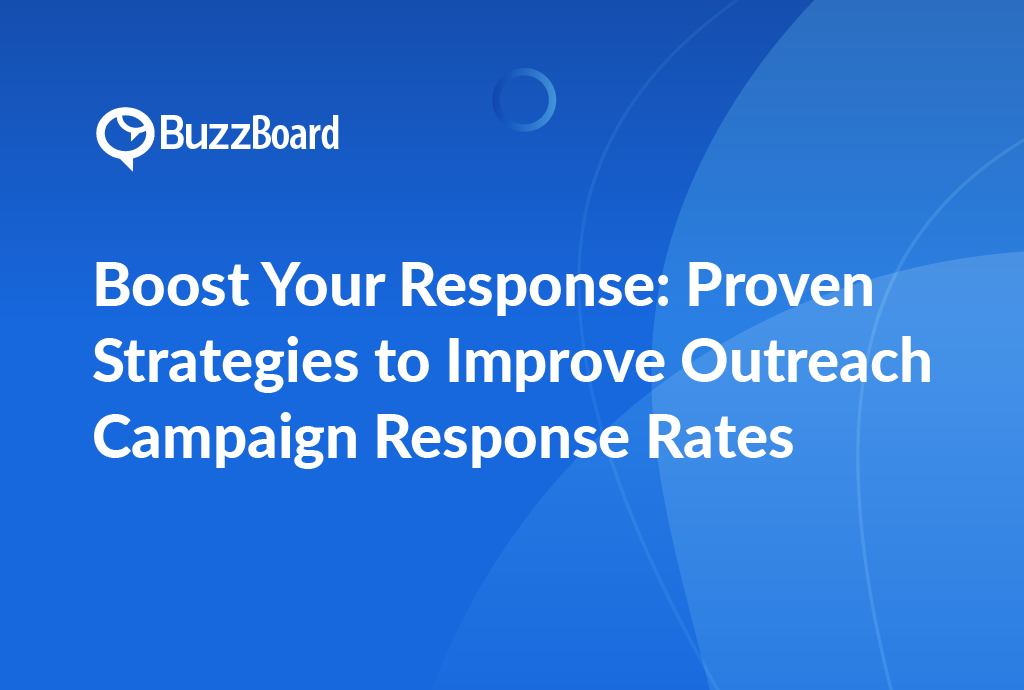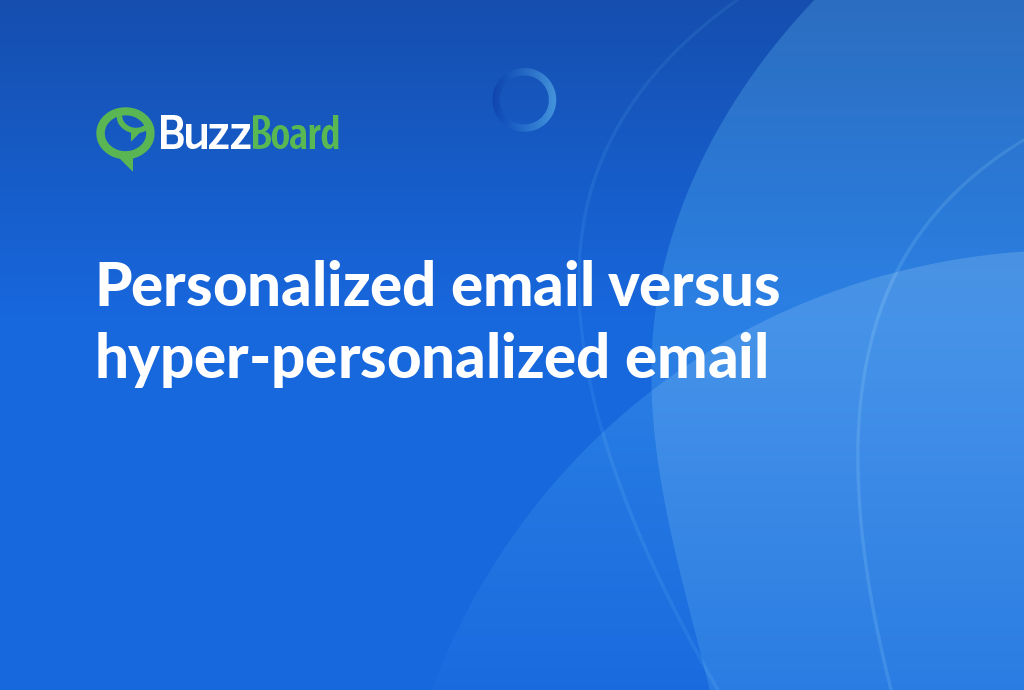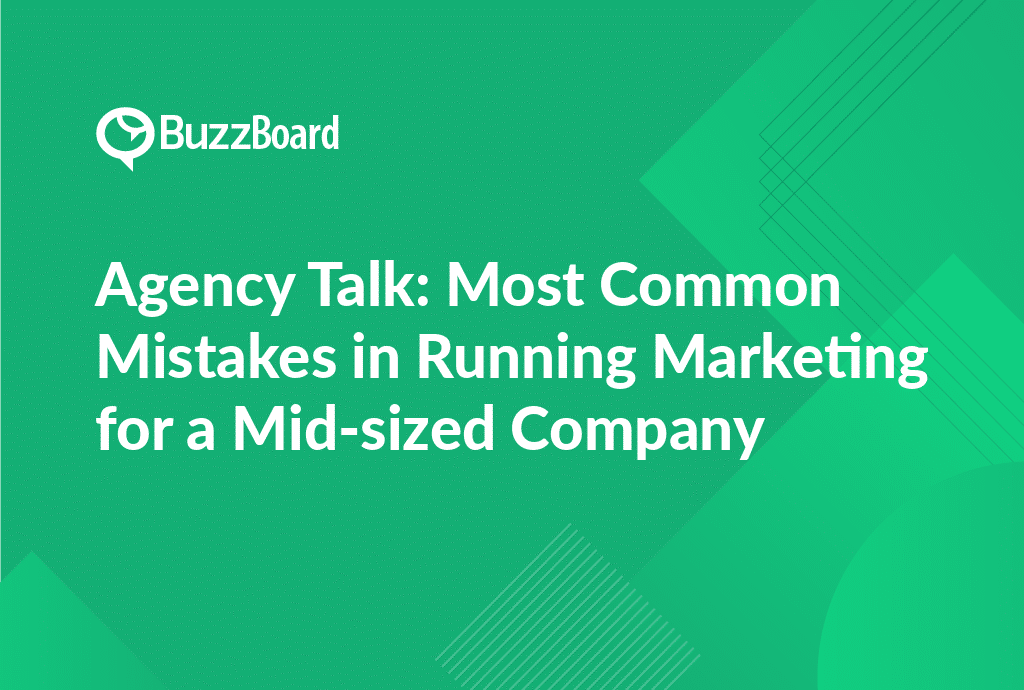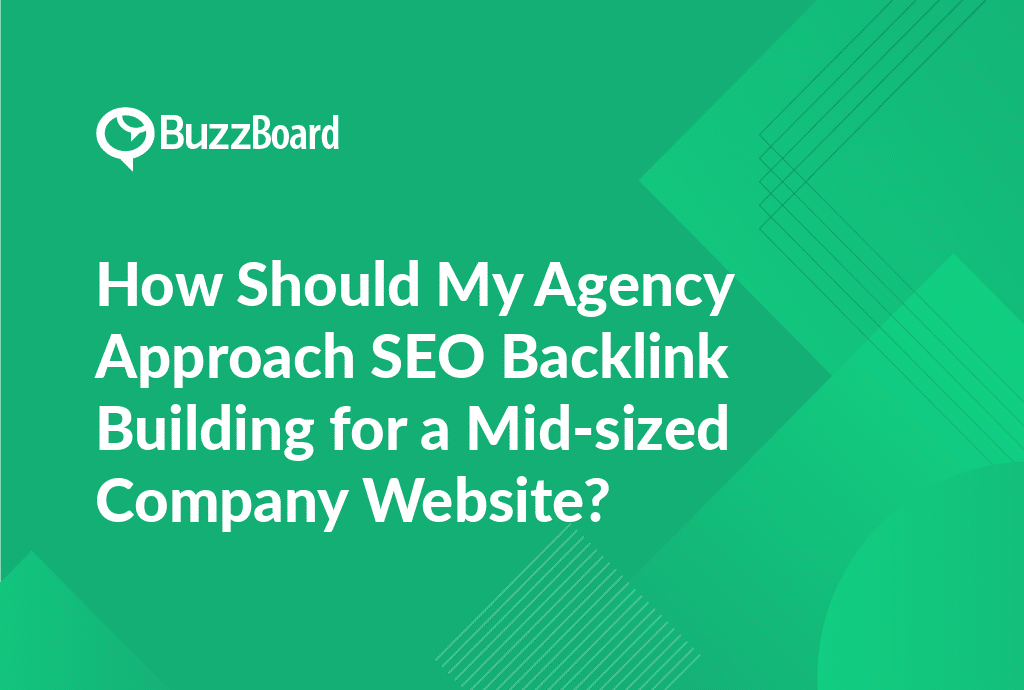Understanding the Significance of Response Rates in Outreach Campaigns
Sales professionals recognize the critical role that outreach campaigns play in engaging potential clients. Central to this recognition is understanding the importance of response rates. So, how can we enhance outreach campaign response rates for more effective client engagement?
A primary approach is personalization. By crafting your campaigns to address the unique needs and preferences of potential clients, you can significantly boost your response rate. Effective practices include using recipients’ names, offering solutions tailored to their business needs, and using data to deliver relevant content.
Your value proposition is another central element. This is your unique selling point that differentiates you from the competition and makes you appealing to your clients. It should be compelling enough to elicit a response. The call to action (CTA) also has a significant impact on the response rate. Your CTA should be clear, direct, and persuasive, encouraging clients to respond immediately.
Strategic timing of your outreach can also enhance response rates. Conduct research to determine when your target audience is most active and most likely to interact with your campaign. Additionally, an effective follow-up strategy can significantly increase your response rates.
Providing incentives such as discounts, free consultations, or complimentary items can stimulate responses. However, it’s essential to prioritize providing true value.
Finally, try to minimize friction in the response process. Ensure that your campaign is easy to comprehend, your CTA is clear, and the response mechanism is straightforward and user-friendly.
In conclusion, pitching to potential clients is a fundamental role for sales professionals. Improve your outreach campaign response rates by adopting these strategies and setting yourself apart in the competitive digital marketing landscape.
Role of Personalization and Value Proposition in Improving Campaign Response Rates
Improving response rates for outreach campaigns is a top priority for salespeople in today’s digital world, where competition is fierce and attention spans are short. To stand out from the crowd and drive meaningful engagement, sales teams must harness the power of personalization and articulate a strong value proposition. By doing so, they can create targeted campaigns that resonate with prospects and ultimately drive conversions.
Personalization is a crucial aspect of effective outreach campaigns. It involves adjusting your marketing strategies to cater to the unique preferences, challenges, and objectives of your prospects. This targeted approach can significantly boost customer engagement and solidify their connection to your brand. For instance, techniques such as:
- Tailoring your emails or landing pages based on factors such as the prospect’s name, location, and past interactions with your company
- Using personalized subject lines and greetings to address prospects by name
- Creating targeted content that speaks directly to the prospect’s pain points and interests
- Utilizing data and analytics to segment your audience and deliver relevant messages
can be highly effective in grabbing the attention of your target audience.
On the other hand, a strong value proposition is essential for communicating the unique benefits and perks that your product or service offers customers. A robust value proposition can serve as a powerful call to action, prompting prospects to take the next step – be it purchasing a product, subscribing to a newsletter, or scheduling a consultation. To craft a compelling value proposition, consider the following:
- Identify the unique benefits and differentiators of your product or service
- Highlight the value that your solution can bring to the customer
- Use clear and concise language to communicate your value proposition
- Use storytelling and social proof to illustrate the success of your product or service
- Continuously refine and iterate on your value proposition based on customer feedback and market trends
Boosting campaign response rates isn’t just about creating the perfect outreach campaign. Tactics such as:
- Perfectly timing your campaign to coincide with industry events, holidays, or other relevant milestones
- Implementing diligent follow-up strategies to keep prospects engaged and interested
- Offering incentives, such as discounts or free trials, to encourage prospects to take action
- Utilizing multiple channels, such as email, social media, and phone, to reach prospects
- Continuously monitoring and optimizing your campaign to improve response rates
can also substantially enhance response rates.
It’s also important to ensure your system is designed to reduce friction, facilitating a smoother conversion process. This can be achieved by:
- Simplifying your website and landing pages to make it easy for prospects to find what they’re looking for
- Streamlining your sales process to reduce the number of steps required to complete a purchase
- Providing clear and concise messaging to eliminate confusion and uncertainty
- Offering multiple payment options and flexible pricing plans to accommodate different customer needs
To begin employing these strategies today, peruse our resources on personalization and value propositions that can effectively increase your outreach campaign response rates. Additionally, consider scheduling a consultation with our team to see how we can aid you in this endeavor. With the right tools, expertise, and strategies, you can drive meaningful engagement and conversions, and ultimately achieve your sales goals.
The Importance of a Clear Call to Action and Timing in Increasing Responses
The successful implementation of a defined call to action (CTA) and timely execution are crucial components of a successful outreach campaign. A well-structured CTA not only compels your audience to take action, but also noticeably improves campaign response rates. In fact, a clear and concise CTA can increase conversion rates by up to 200% (Source: HubSpot). By providing a clear direction for your audience, a well-crafted CTA encourages them to take the desired action, whether it’s signing up for a webinar, downloading an e-book, or making a purchase.
Infusing personalization in your outreach adds a human element to your campaign, fostering a robust connection with your audience, boosting response probability, and enhancing your brand’s trust quotient. Personalization can be achieved through various means, such as addressing recipients by name, tailoring content to their interests, or using data-driven insights to create targeted messaging. By speaking directly to your audience’s needs and concerns, personalization helps to build trust and credibility, increasing the likelihood of a positive response.
Timing is also a critical component of a successful outreach campaign. Ensuring that your outreach coincides with your audience’s receptivity peak can significantly enhance response rates. This may involve conducting research to determine the best times to reach your audience, whether it’s during a specific time of day, week, or month. By timing your outreach strategically, you can increase the likelihood of your message being received and acted upon.
The importance of follow-up strategies cannot be overstated. Post-action messages play a crucial role in nurturing leads and reinforcing the value proposition. By sending targeted follow-up communications, you can continue to educate and engage your audience, increasing the chances of conversion. Follow-up strategies can include email campaigns, social media messaging, or even phone calls. By staying top of mind and providing ongoing value, you can build a loyal following and drive long-term results.
Incentives offered during outreach can also boost its appeal, encouraging recipients to take action. By providing a compelling reason to respond, incentives can increase participation rates and drive conversions. This may involve offering exclusive discounts, free trials, or access to exclusive content. By providing a tangible benefit, incentives can motivate recipients to take action, increasing the effectiveness of your outreach campaign.
Finally, eliminating friction-focused practices, such as streamlining the response process, can encourage greater participation. By making it easy for recipients to respond, you can increase the likelihood of a positive outcome. This may involve simplifying the sign-up process, reducing the number of form fields, or providing clear instructions on how to respond. By reducing friction and making it easy for recipients to take action, you can increase the effectiveness of your outreach campaign and drive long-term results.
A successful outreach campaign requires a combination of strategic planning, effective execution, and ongoing optimization. By implementing these strategies, you can construct a compelling outreach campaign capable of grasping attention and sparking responses. Experiment with different approaches to find what resonates with your audience, and experience a surge in your response rates. Remember, the key to a successful outreach campaign is to provide value, build trust, and encourage action. By doing so, you can drive long-term results and achieve your marketing goals.
Incorporating Follow-up Strategies and Incentives to Boost Campaign Success
Crafting effective outreach campaigns that drive meaningful responses is crucial for businesses seeking to establish a strong online presence and build lasting relationships with their target audience. One strategy that can significantly elevate campaign success is incorporating follow-up procedures and incentives that cater to the unique needs and preferences of each recipient.
Personalization is a key component of successful follow-up strategies. It’s no longer sufficient to simply address recipients by name; instead, businesses must tailor their content, offers, and communication to resonate with each individual’s interests, preferences, and previous interactions. This level of personalization not only increases the likelihood of engagement but also fosters trust and loyalty among customers. By demonstrating a genuine understanding of their needs and concerns, businesses can establish a deeper connection with their audience and build a loyal customer base.
However, personalization alone is not enough to guarantee campaign success. A solid value proposition is essential, providing compelling reasons why prospects should interact with a business. This value proposition should be clear, concise, and relevant to the target audience, serving as a catalyst for engagement and conversion. Coupled with a clear call to action, a strong value proposition can significantly improve the performance of an outreach campaign.
Timing is also a critical factor in follow-up strategies. Understanding when potential customers are most likely to respond is crucial for maximizing the impact of a campaign. By sending follow-up communications at the right moment, businesses can increase the likelihood of seizing their audience’s attention and minimizing the risk of their message being overlooked in a crowded inbox.
Incentives play a vital role in encouraging prospects to take the desired action. These can take many forms, including discounts, special offers, exclusive content, and other perks that align with a business’s value proposition. Incentives not only motivate prospects but also reassure and express appreciation, fostering a sense of loyalty and commitment. By offering relevant and compelling incentives, businesses can create a sense of urgency and encourage prospects to take action.
Finally, minimizing friction is essential for ensuring a seamless response process. Businesses should strive to make it as easy as possible for prospects to respond or proceed with the next step, eliminating any obstacles or barriers that might deter them. Simplicity and convenience are critical factors in augmenting response rates, as prospects are more likely to engage with a business that makes it easy for them to do so.
To achieve optimal results, businesses should consider the following best practices:
- Use data and analytics to inform follow-up strategies, tailoring communications to the unique needs and preferences of each recipient.
- Develop a clear and compelling value proposition that resonates with the target audience.
- Use incentives strategically, offering relevant and compelling rewards that align with the value proposition.
- Timing is everything; send follow-up communications at the right moment to maximize impact.
- Minimize friction by making it easy for prospects to respond or proceed with the next step.
- Continuously monitor and optimize follow-up strategies, using data and analytics to refine and improve campaign performance.
By incorporating these best practices into their outreach campaigns, businesses can significantly elevate response rates, build stronger relationships with their target audience, and drive meaningful results.
Ways to Eliminate Friction in an Outreach Campaign for Improved Response Rates
Improving outreach campaign response rates is a crucial goal for salespeople and digital marketing agencies, as it directly impacts the success of their efforts. However, achieving the desired customer engagement can be elusive due to friction in outreach strategies, which can be caused by a lack of personalization, unclear value propositions, poor timing, and unengaging calls to action. To eliminate this friction, it’s essential to focus on the details that make a significant difference in the effectiveness of your outreach campaigns.
Personalization is a critical component of a successful outreach campaign. By segmenting your audience and creating a targeted approach, you can make each person feel like your campaign is speaking directly to them. This involves understanding their needs, pain points, and interests, and tailoring your message to resonate with them. For example, if you’re targeting a specific industry, you can use industry-specific language and examples to demonstrate your expertise and show that you understand their unique challenges. By doing so, you can increase the relevance of your message and drive engagement.
In addition to personalization, it’s essential to clearly express your value proposition. This involves communicating the benefits of your product or service and how it can solve the recipient’s problems. Your value proposition should be unique, compelling, and relevant to your target audience. It should also be concise and easy to understand, as you want to make it easy for the recipient to grasp the value you’re offering. By providing a clear and compelling value proposition, you can motivate the recipient to take the next step and respond to your campaign.
Timing is another critical aspect of an effective outreach campaign. Sending the right message at the wrong time can lead to missed opportunities, as the recipient may not be receptive to your message. To avoid this, use analytics to understand when your audience is most responsive and time your outreaches accordingly. For example, if you’re targeting busy professionals, you may want to send your messages during their lunch break or after work hours when they’re more likely to have time to respond. By timing your messages correctly, you can increase the chances of getting a response.
An enticing call to action can also significantly boost your response rates. A clear and direct call to action tells the recipient exactly what you want them to do next, making it easy for them to take action. Avoid using vague language or complex instructions, as this can confuse the recipient and lead to inaction. Instead, use simple and straightforward language to direct the recipient to the next step. For example, you could say “Click the link below to learn more about our product” or “Reply to this email to schedule a demo.”
Iterative follow-up strategies are also essential for keeping the momentum intact and improving response rates. By following up with your recipients in a timely and respectful manner, you can keep the conversation going and encourage them to take action. However, it’s essential to avoid being pushy or aggressive, as this can be off-putting and lead to a negative response. Instead, show patience and respect for the recipient’s decision-making process, and be willing to adapt your approach as needed.
Consider offering incentives to peak curiosity and motivate action. Early bird discounts, limited-time offers, or exclusive access to new products or services can make a significant difference in the response rates of your outreach campaign. By offering something of value, you can create a sense of urgency and encourage the recipient to take action.
Finally, reducing friction in your outreach campaign can be simple. By focusing on the details that make a difference, such as personalization, value propositions, timing, and calls to action, you can improve response rates and foster lasting customer relationships. By following these strategies, you can create a successful outreach campaign that drives engagement, conversions, and revenue. Remember to be patient, persistent, and respectful, and always be willing to adapt and improve your approach as needed.








